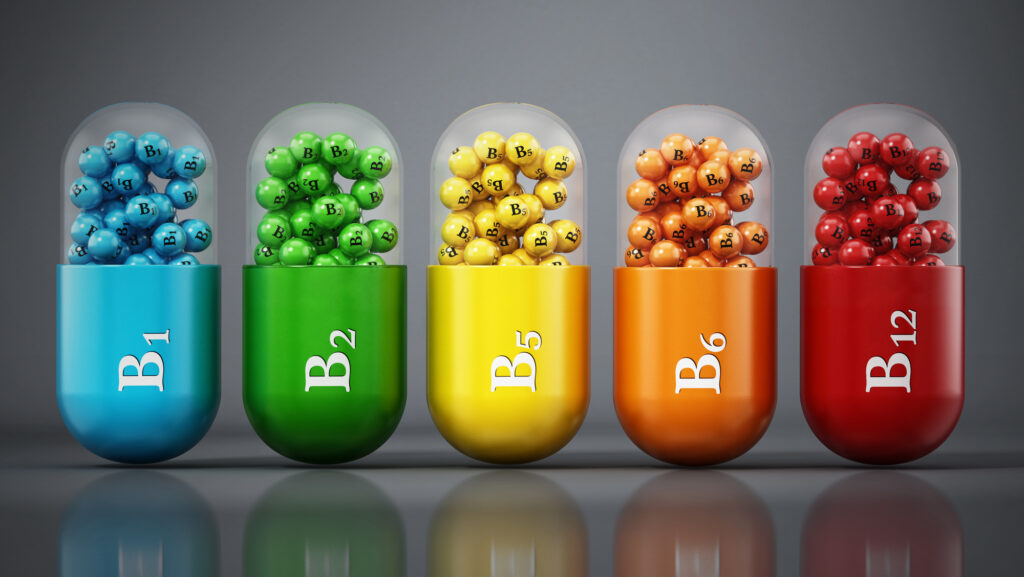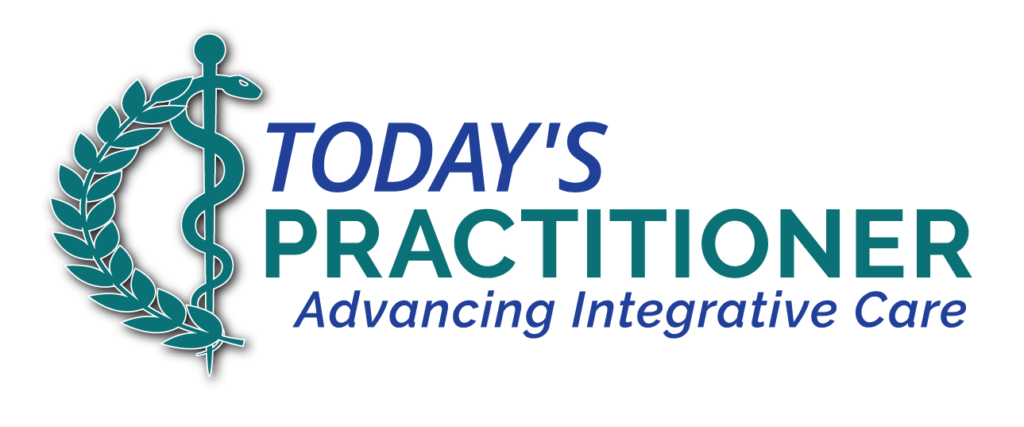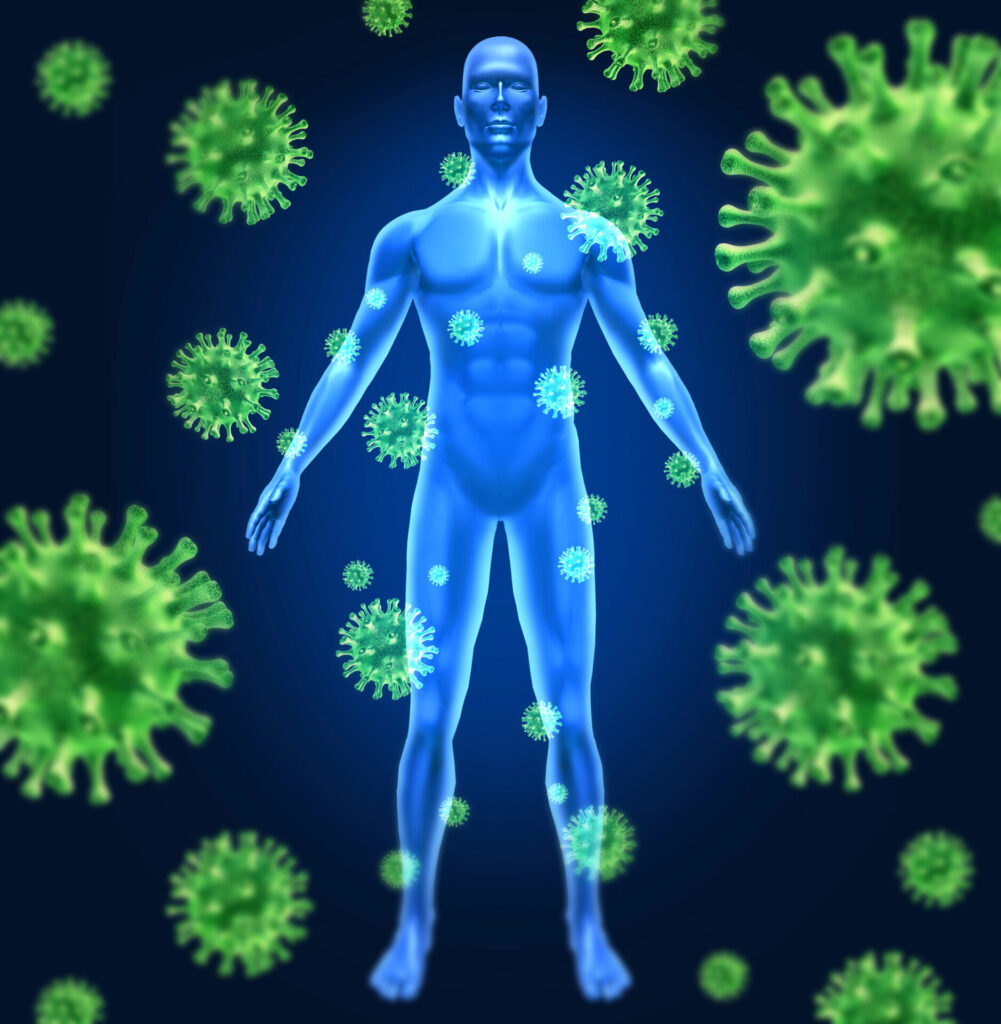Most clinicians have heard of methylation and know it’s important, but they don’t know the best way to assess for methylation defects or in which patients. Methylation is a biochemical process that happens billions of times per second in every cell, so it’s a big deal. But what’s the practical application in everyday practice? I work for a lab that offers methylation testing and consult with clinicians on this topic daily. In this article, you’ll learn about the methylation cycle, why methylation is important, and how testing can help guide treatment strategies.
What is Methylation and Why is It Important?
Methylation is a chemical process where a methyl group (-CH₃) is added to a molecule, usually DNA, RNA, proteins, and other molecules, which impacts function. This process happens in every cell throughout the body, therefore impacting diverse activities including:1-7
- DNA and RNA synthesis
- Gene regulation
- Creatine production for skeletal muscle
- Hormone regulation and metabolism
- Neurotransmitter production and metabolism
- Energy production
- Cell membrane phospholipid biosynthesis
- Myelination
- Immune function
- Vascular function
Chronic health consequences associated with hypomethylation include cardiovascular disease, autoimmune disease, diabetes, neurodegenerative disease, psychological disorders, and cancer.8,9
DNA methylation results in gene regulation by switching genes on and off and is the most well-studied epigenetic mechanism.10 Epigenetics relates to how environmental influences affect gene expression. This is exciting because we can optimize genetic expression and slow biological aging.
The Methylation Cycle

The schematic depicts the methylation cycle, folate cycle, and transsulfuration pathway.11
Meet SAM, The Universal Methyl Donor
Methylation involves an important molecule called S-adenosylmethionine (SAM), the body’s main methyl donor. SAM is a major player; among enzyme substrates, SAM is the second most used, just behind ATP.12 Several other molecules are also capable of donating methyl groups.
The methyl group is added or transferred via an enzyme called a methyltransferase. Depending on the cellular function, several methyltransferases carry out various functions. For example, catechol-O-methyltransferase (COMT) methylates catecholamines and catechol estrogens to metabolize and detoxify these compounds. DNA methyltransferase (DNMT) methylates DNA and regulates gene expression.
Enzymes Keep the Methylation Cycle Spinning
The methylation cycle involves a series of steps to recycle the substrates, including SAM S-adenosylhomocysteine (SAH) homocysteine (Hcy) methionine SAM (cycle repeats). At any point, if the cycle becomes “stuck,” you may see elevations or deficiencies of these markers and a downstream impact on other methylation-dependent processes. Methylation enzymes can be impaired for several reasons:
- Minor genetic mutations called a single-nucleotide polymorphism, or SNPs, are very common. If the enzyme is up- or down-regulated because of a SNP, methylation is not as efficient.
- Many methylation enzymes depend on nutrient cofactors, so an inadequate dietary supply can impair methylation.
- Environmental and lifestyle factors such as alcohol, smoking, and environmental toxins can also impair enzyme function.
For example, the methionine adenosyltransferase (MAT1A) enzyme catalyzes the conversion of methionine to make SAM. A MAT SNP can cause the enzyme to be down-regulated (slow), resulting in low SAM.13 Magnesium and potassium are cofactors for this enzyme, and deficiencies may impair function.14 Alcohol reduces MAT1A activity and SAM levels.15
Methylation Cycle Marker Abnormalities Have Clinical Consequences
- Elevated homocysteine (Hcy) is an independent risk factor for cardiovascular disease. Homocysteine is also associated with diabetes, gastrointestinal disorders, bone health, and neurodegenerative diseases.16,17
- While Hcy seems to get all the attention, elevated SAH also carries cardiovascular risk.16,17 So, one may have a normal Hcy, but if SAH is elevated, there may still be a problem. Furthermore, elevated SAH inhibits methylation reactions.7
- SAM, as we know, is important for methylation, and deficiencies can result in hypomethylation.
- High or low methionine doesn’t necessarily have clinical associations but may offer insight into pathway malfunction. Since methionine is an amino acid, it may also indicate a low-protein diet.
Transsulfuration, An Important Related Pathway
The methylation cycle is closely tied to another pathway, transsulfuration. The ultimate byproduct of interest is glutathione (GSH), the body’s major antioxidant and detoxifier. The balance between oxidative stress and antioxidants is critical for methylation function. Excess oxidative stress, creating a higher demand for GSH can “drain” the methylation substrates, resulting in reduced methylation.18
Which Patients Should Consider Methylation Testing?
Because of its diverse functions, methylation problems can manifest in a variety of ways. The most common reasons for ordering methylation testing include:
- Detoxification concerns (e.g., environmental toxin exposure, alcohol, hormone replacement therapy)18,19
- Cancer risk20,21
- Cardiovascular disease7
- Mental health disorders4
- Neurological disorders7,22
- Chronic fatigue23
- Infertility24,25
- Histamine intolerance26
- Autoimmune disease7
Methylation testing is one piece of the puzzle and should be evaluated as part of a comprehensive workup.
Testing for Methylation Defects
There are several options when it comes to methylation testing. It’s important to distinguish phenotypic from genotypic testing. Genotypic testing for genetic SNPs is popular but does not provide the complete picture. You’ve probably heard the phrase, “your genes aren’t your destiny.” This is shown in genetically identical monozygotic twin studies, where the incidence of some diseases is entirely different.8 Just because a patient has a particular genotype, doesn’t always mean it will be expressed. Phenotypic testing with biomarkers provides a real-time assessment of their current methylation status. Genetics influence phenotypic findings, but it’s not the only factor – epigenetic influences from diet, lifestyle, and environment also contribute. Hence the metaphor, “genetics loads the gun, but environment pulls the trigger.”
- Phenotypic testing:
- Testing for biochemical markers relating to the methylation pathway include homocysteine, SAM, SAH, methionine, betaine, choline, glutathione, and others.
- Testing for methylation pathway cofactors includes folate, B6, B12, zinc, and magnesium levels.
- Organic acid testing shows a functional need for B-vitamins, such as methylmalonic acid and the need for vitamin B12, or formiminoglutamic acid (FIGlu) and folate.
- Genotypic testing: Companies offer test panels for genetic single-nucleotide polymorphisms (SNPs). MTHFR is a popular methylation SNP, but there are several SNPs with clinical significance relating to methylation.
- Epigenetic testing: Novel advanced testing for DNA methylation patterns evaluates genomic expression of a constellation of methylation-related genomic loci.27 This testing shows if your interventions are successfully influencing DNA methylation and beneficial methylation gene expression, which is thought to relate to biological age. This testing was used in a diet and lifestyle program research study mentioned below.
Strategies to Optimize Methylation
Diet and Lifestyle Changes
First and foremost, diet and lifestyle optimization should be considered to improve methylation problems. Epigenetic influences like diet, physical activity, smoking, alcohol, environmental pollutants, oxidative stress, and psychological stress impact methylation, and modifications influence genetic expression.28,29
Studies show that after an 8-week methylation-supportive comprehensive diet and lifestyle program, there was a reversal in biological age assessed by DNA methylation changes. The program focused on nutrient-dense foods, intermittent fasting, optimal sleep, stress management, physical activity, and gut microbiome support.30,31 Detailed information about the program can be found in the referenced studies or the book Younger You by Dr. Kara Fitzgerald.
Methylation Supplements
Key Methylation Nutrients
Supplements may also help treat lab abnormalities. Vitamins B2, B3, B6, B12, and folate, and minerals like zinc, magnesium, and iron are cofactors for many enzymes in the methylation and transsulfuration pathways.32-36 Trimethylglycine (TMG), also known as betaine, is a methyl donor that helps convert homocysteine to methionine, thus lowering elevated homocysteine.37 Choline from meat, eggs, seafood, and broccoli is the precursor to betaine. Protein is also important, as many amino acids are cofactors and substrates in the pathways.
I’m often asked if a person should take SAMe. Technically, if a person’s SAM level is low on testing, supplemental SAMe may be considered; however, some research has concerns over the potential toxicity of SAM.12,38 Some clinicians have a lot of success with SAMe in depression, while others are hesitant to prescribe it because it can cause anxiety. If there are other imbalances in the methylation cycle, I first think about nutritional cofactors to optimize enzyme function. This helps to redistribute the resources, which can naturally increase SAM.
Nutrients don’t act in isolation, and studies suggest that the interaction between micronutrients is important for methylation versus supplementing with one micronutrient.32 For example, folate is needed for converting homocysteine to methionine, but so are B12 and zinc. If you only prescribe folate for homocysteine elevations in the presence of B12 or zinc deficiency, it won’t work.39,40
Related:

Demystifying Methylation: Patterns, Processes and the Pivotal Role of B vitamins.
Methylated or Non-Methylated Vitamins?
I’m also asked if there’s a biomarker or pattern of biomarkers that would reveal whether someone would be a better candidate for methylated or non-methylated forms of B-vitamins like methylfolate and methylcobalamin. They mention that some patients feel anxious when they start on methylated B-vitamins. I have not noticed a particular biomarker pattern, and it’s challenging to find literature on this topic, but there is advice from methylation experts.
According to Dr. Thomas Guilliams, former VP of Science for Ortho Molecular Products for 24 years, the benefit of giving methylated folate is mostly for individuals with MTHFR SNPs. If they have the C677T variant or both C677T and A1298C they may benefit from the methylated form of folate. He also says that a few studies show that methylcobalamin is not necessarily superior to other forms of B12 and does not speed up methylation.
Seeking Health is a supplement company with formulations by methylation expert Dr. Ben Lynch. The Seeking Health website mentions that patients with slow COMT may better tolerate hydrox-adeno B12 and folinic acid as methyl-free versions if they struggle with irritability or anxiety. Magnesium is also important as a cofactor for COMT.
Overmethylation and Hypermethylation Concerns
Overmethylation and hypermethylation describe 2 different concepts. Overmethylation relates to the previous section on methylated or non-methylated vitamins, where clinically, patients feel overstimulated from methylated forms of supplements. This observation is more anecdotal and lacks scientific evidence. Hypermethylation of DNA has concerning clinical associations. DNA methylation patterns are complex; aging is associated with genome-wide hypomethylation, but at the same time involves hypermethylation of tumor suppressor genes, leading to genome instability and cancer.32
This certainly raises concerns for the clinician not wanting to promote hypermethylation with high-dose methyl donor supplements. One study showed that folic acid and B12 supplementation were associated with an increased risk of colorectal cancer.41 A hotly debated topic is whether synthetic folic acid versus methylfolate or folinic acid can be attributed to cancer risk in studies.41,42 Most functional medicine practitioners and supplement companies do not use folic acid. In her book, Dr. Fitzgerald expresses concern with flooding the body with isolated nutrients, hence why she designed a methyl-donor-rich diet and lifestyle intervention program.
Clinicians ask if there are test patterns that indicate overmethylation or hypermethylation. Serum and RBC folate and B12 concentrations have been shown to correlate with DNA hypermethylation.43,44 Theoretically, elevated SAM, or a higher SAM/SAH ratio could indicate hypermethylation, but there is not enough research to support this. Some research indicates that more SAM does not necessarily mean more methylation, and via negative feedback, may actually inhibit methylation.12
Also, just because a person is having a negative reaction to methylated supplements, it doesn’t mean that DNA hypermethylation is occurring.
Optimize Methylation and Reverse Aging and Disease
Methylation impacts aging and disease at the cellular level and is influenced by modifiable factors like diet, lifestyle, and environment. This allows clinicians to intervene and optimize this important biochemical process to reverse disease. Testing can help identify methylation problems that can be corrected with diet and lifestyle changes, and/or dietary supplements.
References:
- Moore LD, Le T, Fan G. DNA methylation and its basic function. Neuropsychopharmacology : official publication of the American College of Neuropsychopharmacology. 2013;38(1):23-38.
- Joncquel-Chevalier Curt M, Voicu PM, Fontaine M, et al. Creatine biosynthesis and transport in health and disease. Biochimie. 2015;119:146-165.
- Worda C, Sator MO, Schneeberger C, Jantschev T, Ferlitsch K, Huber JC. Influence of the catechol-O-methyltransferase (COMT) codon 158 polymorphism on estrogen levels in women. Human reproduction (Oxford, England). 2003;18(2):262-266.
- Lachman HM, Papolos DF, Saito T, Yu YM, Szumlanski CL, Weinshilboum RM. Human catechol-O-methyltransferase pharmacogenetics: description of a functional polymorphism and its potential application to neuropsychiatric disorders. Pharmacogenetics. 1996;6(3):243-250.
- Arthur-Farraj P, Moyon S. DNA methylation in Schwann cells and in oligodendrocytes. Glia. 2020;68(8):1568-1583.
- Lawson BR, Eleftheriadis T, Tardif V, et al. Transmethylation in immunity and autoimmunity. Clinical immunology (Orlando, Fla). 2012;143(1):8-21.
- Schalinske KL, Smazal AL. Homocysteine imbalance: a pathological metabolic marker. Advances in nutrition (Bethesda, Md). 2012;3(6):755-762.
- Younesian S, Mohammadi MH, Younesian O, Momeny M, Ghaffari SH, Bashash D. DNA methylation in human diseases. Heliyon. 2024;10(11):e32366.
- Jin Z, Liu Y. DNA methylation in human diseases. Genes & diseases. 2018;5(1):1-8.
- Mattei AL, Bailly N, Meissner A. DNA methylation: a historical perspective. Trends in genetics : TIG. 2022;38(7):676-707.
- Singhal NK, Sternbach S, Fleming S, et al. Betaine restores epigenetic control and supports neuronal mitochondria in the cuprizone mouse model of multiple sclerosis. Epigenetics. 2020;15(8):871-886.
- Fukumoto K, Ito K, Saer B, et al. Excess S-adenosylmethionine inhibits methylation via catabolism to adenine. Communications biology. 2022;5(1):313.
- Inoue-Choi M, Nelson HH, Robien K, et al. One-carbon metabolism nutrient status and plasma S-adenosylmethionine concentrations in middle-aged and older Chinese in Singapore. International journal of molecular epidemiology and genetics. 2012;3(2):160-173.
- UniProt. Q00266 – METK1_HUMAN. 2025; https://www.uniprot.org/uniprotkb/Q00266/entry.
- Barbier-Torres L, Murray B, Yang JW, et al. Depletion of mitochondrial methionine adenosyltransferase α1 triggers mitochondrial dysfunction in alcohol-associated liver disease. Nature communications. 2022;13(1):557.
- Wagner C, Koury MJ. S-Adenosylhomocysteine: a better indicator of vascular disease than homocysteine? The American journal of clinical nutrition. 2007;86(6):1581-1585.
- Kerins DM, Koury MJ, Capdevila A, Rana S, Wagner C. Plasma S-adenosylhomocysteine is a more sensitive indicator of cardiovascular disease than plasma homocysteine. The American journal of clinical nutrition. 2001;74(6):723-729.
- Ji H, Khurana Hershey GK. Genetic and epigenetic influence on the response to environmental particulate matter. The Journal of allergy and clinical immunology. 2012;129(1):33-41.
- Zakhari S. Alcohol metabolism and epigenetics changes. Alcohol research : current reviews. 2013;35(1):6-16.
- Pascale RM, Feo CF, Calvisi DF, Feo F. Deregulation of methionine metabolism as determinant of progression and prognosis of hepatocellular carcinoma. Translational gastroenterology and hepatology. 2018;3:36.
- Wan GX, Cao YW, Li WQ, Li YC, Li F. The Catechol-O-Methyltransferase Val158Met Polymorphism Contributes to the Risk of Breast Cancer in the Chinese Population: An Updated Meta-Analysis. Journal of breast cancer. 2014;17(2):149-156.
- Obeid R, Schadt A, Dillmann U, Kostopoulos P, Fassbender K, Herrmann W. Methylation status and neurodegenerative markers in Parkinson disease. Clinical chemistry. 2009;55(10):1852-1860.
- Apostolou E, Rosén A. Epigenetic reprograming in myalgic encephalomyelitis/chronic fatigue syndrome: A narrative of latent viruses. Journal of internal medicine. 2024;296(1):93-115.
- Baranizadeh K, Bahmanzadeh M, Tavilani H, et al. Evaluation of methylenetetrahydrofolate reductase and S-adenosyl-methionine level in male infertility: A case-control study. International journal of reproductive biomedicine. 2022;20(4):299-306.
- Zeng H, Liu Z, Zhang L, Liu N. MTHFR 677TT is associated with decreased number of embryos and cumulative live birth rate in patients undergoing GnRHa short protocol: a retrospective study. BMC pregnancy and childbirth. 2022;22(1):170.
- Comas-Basté O, Sánchez-Pérez S, Veciana-Nogués MT, Latorre-Moratalla M, Vidal-Carou MDC. Histamine Intolerance: The Current State of the Art. Biomolecules. 2020;10(8).
- Sehgal R, Markov Y, Qin C, et al. Systems Age: A single blood methylation test to quantify aging heterogeneity across 11 physiological systems. bioRxiv : the preprint server for biology. 2024.
- Klemp I, Hoffmann A, Müller L, et al. DNA methylation patterns reflect individual’s lifestyle independent of obesity. Clinical and translational medicine. 2022;12(6):e851.
- Lanata CM, Chung SA, Criswell LA. DNA methylation 101: what is important to know about DNA methylation and its role in SLE risk and disease heterogeneity. Lupus science & medicine. 2018;5(1):e000285.
- Fitzgerald KN, Campbell T, Makarem S, Hodges R. Potential reversal of biological age in women following an 8-week methylation-supportive diet and lifestyle program: a case series. Aging. 2023;15(6):1833-1839.
- Fitzgerald KN, Hodges R, Hanes D, et al. Potential reversal of epigenetic age using a diet and lifestyle intervention: a pilot randomized clinical trial. Aging. 2021;13(7):9419-9432.
- Anderson OS, Sant KE, Dolinoy DC. Nutrition and epigenetics: an interplay of dietary methyl donors, one-carbon metabolism and DNA methylation. The Journal of nutritional biochemistry. 2012;23(8):853-859.
- Azimi Z, Isa MR, Khan J, Wang SM, Ismail Z. Association of zinc level with DNA methylation and its consequences: A systematic review. Heliyon. 2022;8(10):e10815.
- Mahmoud AM, Ali MM. Methyl Donor Micronutrients that Modify DNA Methylation and Cancer Outcome. Nutrients. 2019;11(3).
- Bastos P, Araújo JR, Azevedo I, Martins MJ, Ribeiro L. Effect of a natural mineral-rich water on catechol-O-methyltransferase function. Magnesium research. 2014;27(3):131-141.
- Fan L, Zhu X, Zheng Y, et al. Magnesium Treatment on Methylation Changes of Transmembrane Serine Protease 2 (TMPRSS2). medRxiv : the preprint server for health sciences. 2021.
- Zhao G, He F, Wu C, et al. Betaine in Inflammation: Mechanistic Aspects and Applications. Frontiers in immunology. 2018;9:1070.
- Loehrer FM, Schwab R, Angst CP, Haefeli WE, Fowler B. Influence of oral S-adenosylmethionine on plasma 5-methyltetrahydrofolate, S-adenosylhomocysteine, homocysteine and methionine in healthy humans. The Journal of pharmacology and experimental therapeutics. 1997;282(2):845-850.
- Scott JM. Folate and vitamin B12. The Proceedings of the Nutrition Society. 1999;58(2):441-448.
- Grüngreiff K, Gottstein T, Reinhold D. Zinc Deficiency-An Independent Risk Factor in the Pathogenesis of Haemorrhagic Stroke? Nutrients. 2020;12(11).
- Oliai Araghi S, Kiefte-de Jong JC, van Dijk SC, et al. Folic Acid and Vitamin B12 Supplementation and the Risk of Cancer: Long-term Follow-up of the B Vitamins for the Prevention of Osteoporotic Fractures (B-PROOF) Trial. Cancer epidemiology, biomarkers & prevention : a publication of the American Association for Cancer Research, cosponsored by the American Society of Preventive Oncology. 2019;28(2):275-282.
- Kim YI. Folate and cancer: a tale of Dr. Jekyll and Mr. Hyde? The American journal of clinical nutrition. 2018;107(2):139-142.
- Sanchez H, Hossain MB, Lera L, et al. High levels of circulating folate concentrations are associated with DNA methylation of tumor suppressor and repair genes p16, MLH1, and MGMT in elderly Chileans. Clinical epigenetics. 2017;9:74.
- Wallace K, Grau MV, Levine AJ, et al. Association between folate levels and CpG Island hypermethylation in normal colorectal mucosa. Cancer prevention research (Philadelphia, Pa). 2010;3(12):1552-1564.





